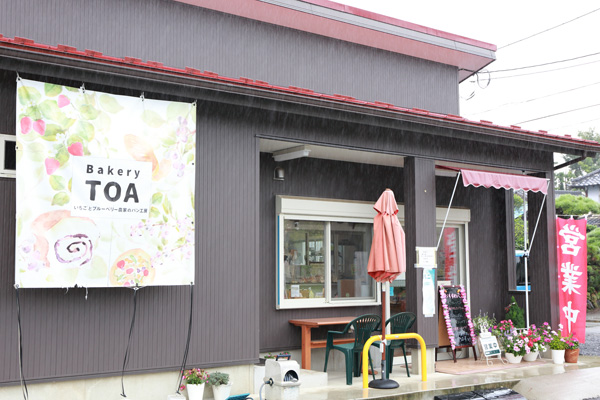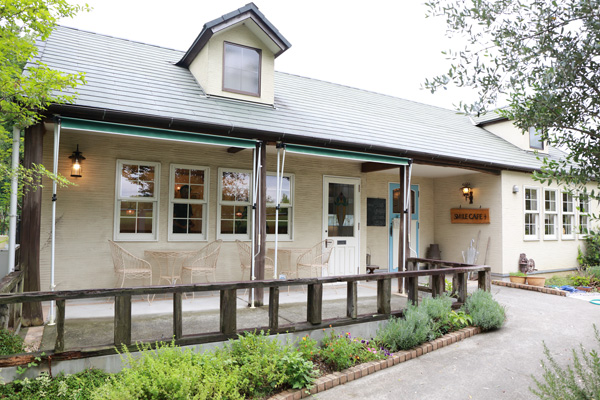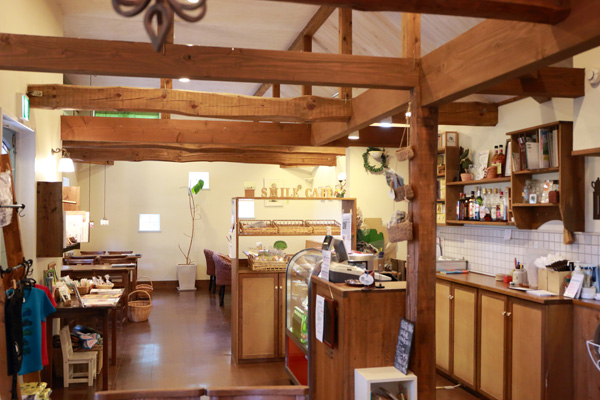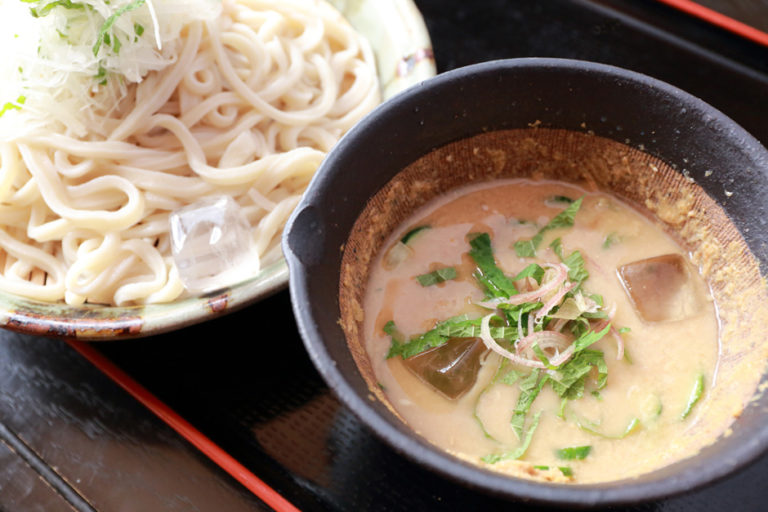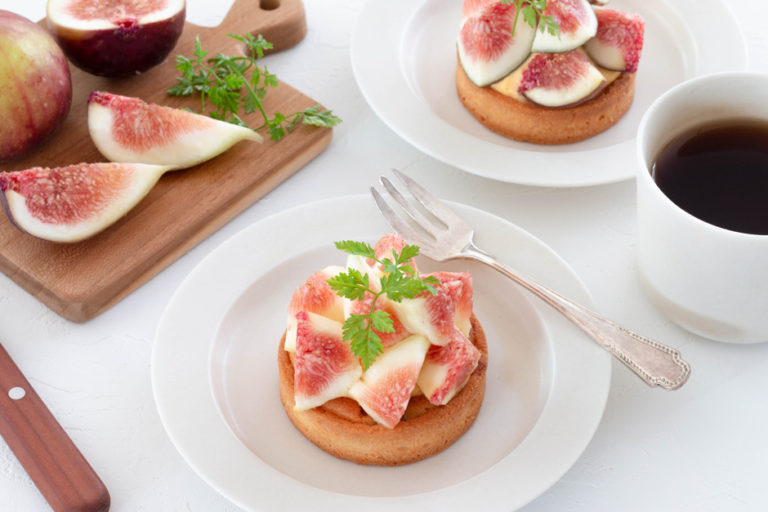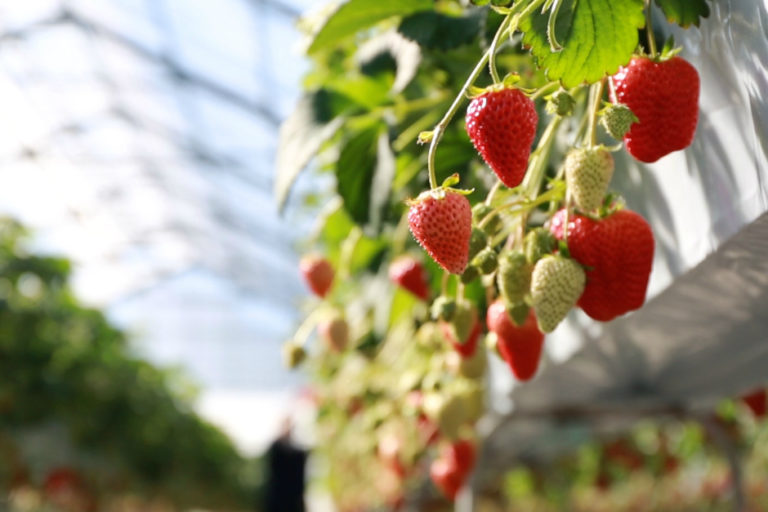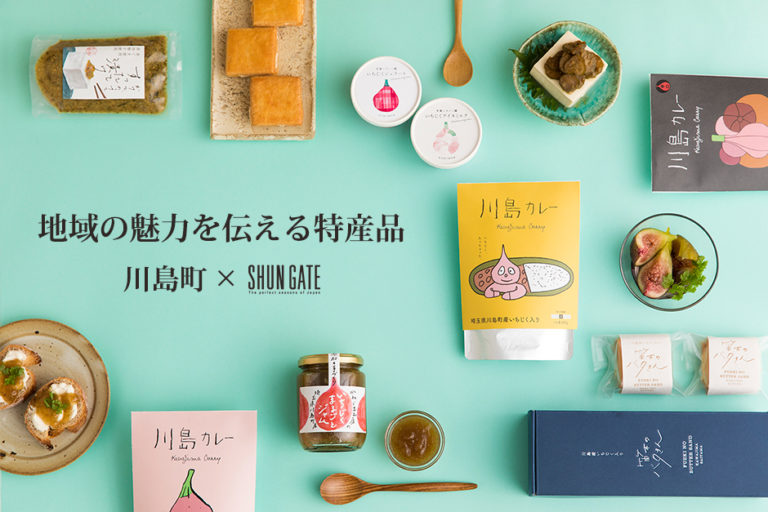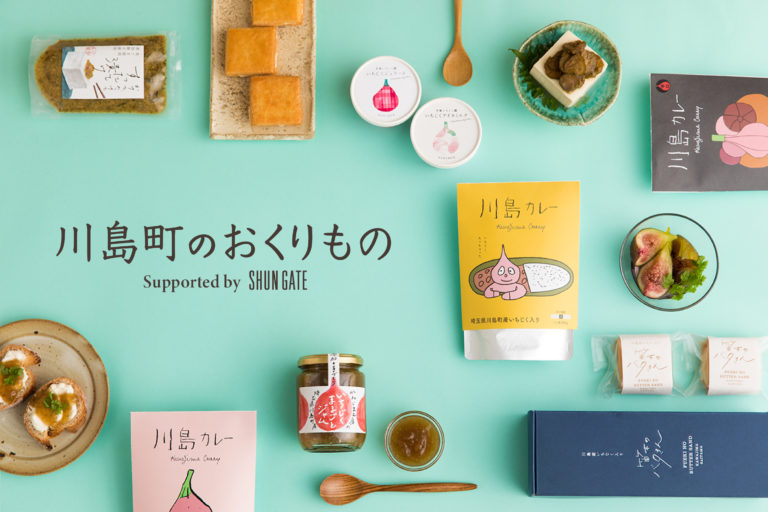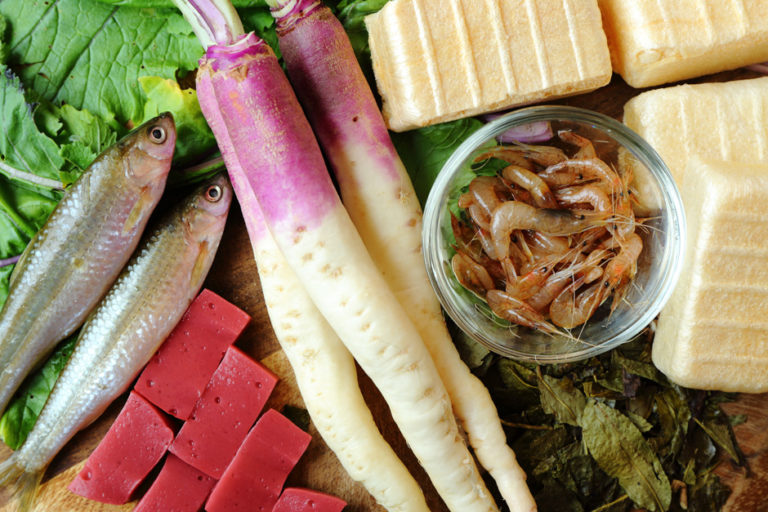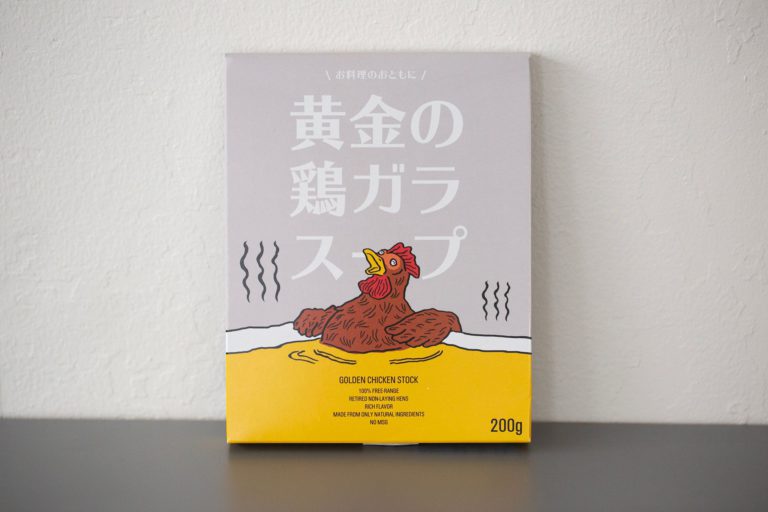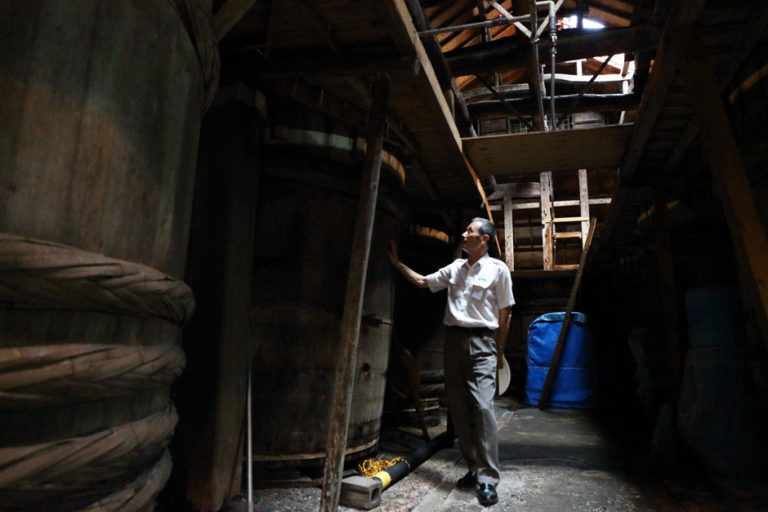45 km from Central Tokyo: Kawajima’s Bounteous Agricultural Products
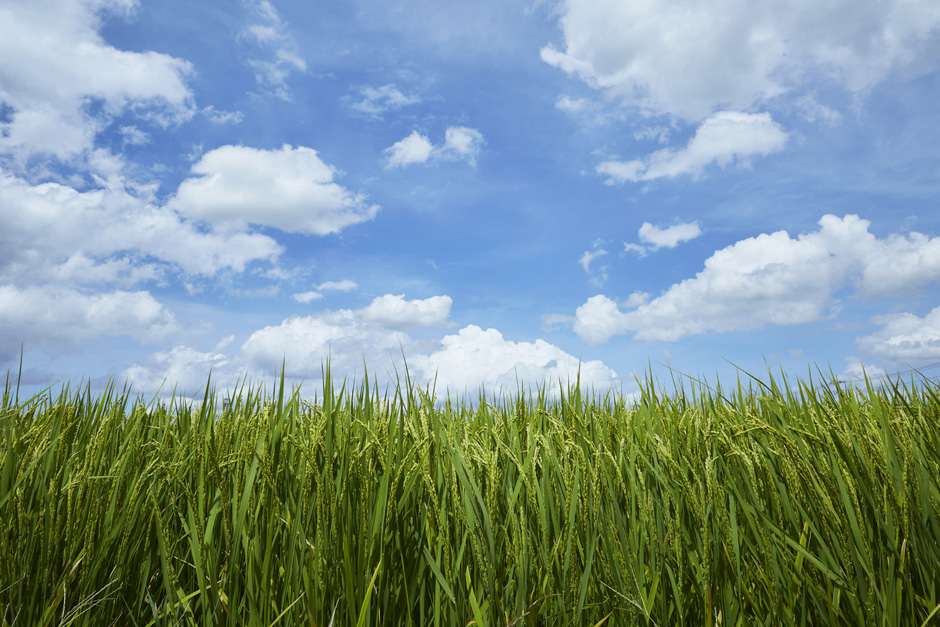
Branded Rice once offered to Kawagoe Clan
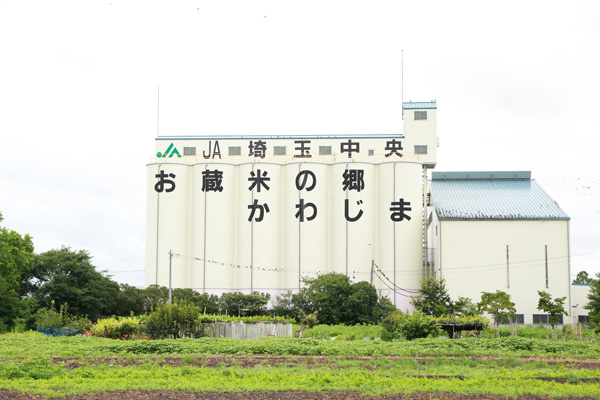
Kawajima owes much of its lively rice farming to its geological composition. Surrounded by the Ichinokawa River in the north, the Arakawa River in the east, and the Tokigawa and Oppegawa Rivers in the west, Kawajima has rich soil and its flat land with only slight altitude fluctuations was perfect for growing rice. Rice grown in Kawajima became well-known and in the Edo period (1603-1868), the town allegedly presented its rice to the Kawagoe Clan. Apparently there were many rice cellars across Kawajima, storing the rice for the clan.
In 1992, the local agricultural co-op decided to register the Rice Branded by Kawagoe Clan as a trademark. The promotion committee for the rice branded by Kawagoe Clan launched in 2011 and has been actively releasing news and promoting the brand.
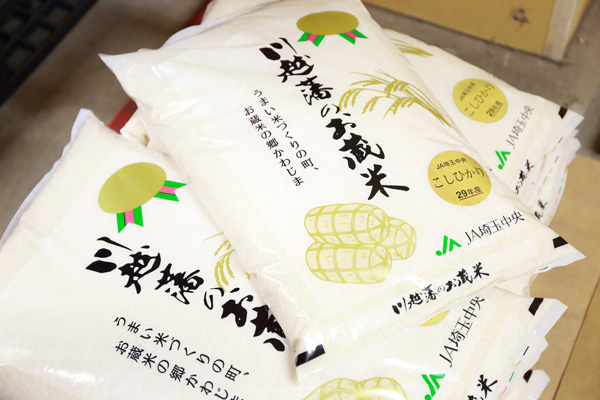
The Rice Branded by Kawagoe Clan comes in two varieties—Koshihikari and Sai No Kizuna. Only 100 farmers, who are members of the Committee, are permitted to grow the Rice Branded by Kawagoe Clan. The rice derives its brand power from its completely pesticide-reduced growing method with organic fertilizers. But fewer pesticides mean an increased risk of insects that can bring disease. In order to reduce this risk, the farmers are working hard day and night on the Cellar Rice.
“Kawajima has distinct temperature fluctuations between day and night, so the rice stores starch. Water for rice paddies used to be from wells and rivers. Thanks to irrigation, the water is now distributed completely to all paddy fields and that led to more stable production,” said Ikuo Uchino, chairman of the promotion committee for the rice branded by Kawagoe Clan, in front of the paddy field of the Sai No Kizuna rice, which was developed in Saitama.
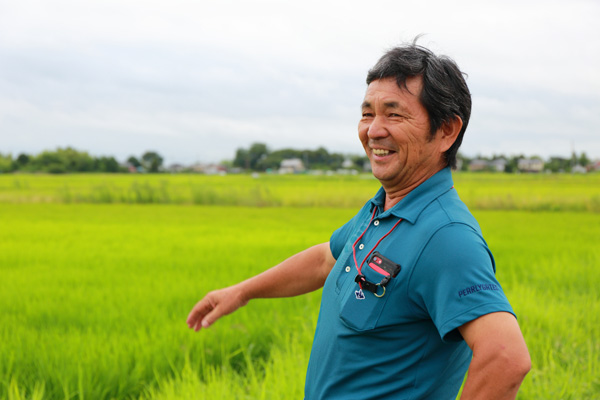
Resilient to heat, it withstands Saitama’s record-breaking heat easily. Even when the temperature continues to exceed 30 degrees Celsius day after day, the rice has little risk of degradation.
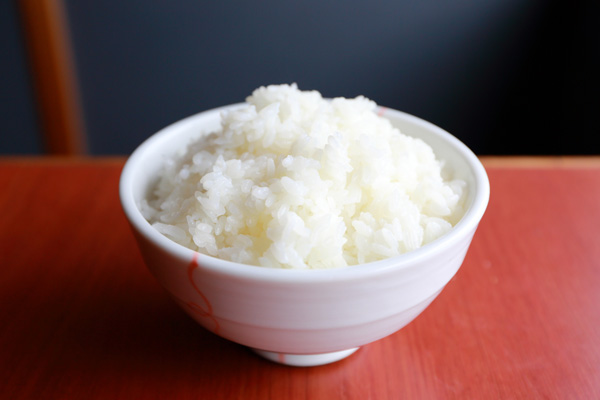
“Harvest starts in August and peaks in September. Sai No Kizuna has larger grains and a higher yield than Koshihikari. When you cook it, it becomes sweet, soft and starchy because it has many sticky constituents.”
Apparently, about 8,000 bags of the Rice Branded by Kawagoe Clan were marketed last year and sold out as soon as they emerged in local supermarkets and farmers’ markets.
Highest fig production in the prefecture
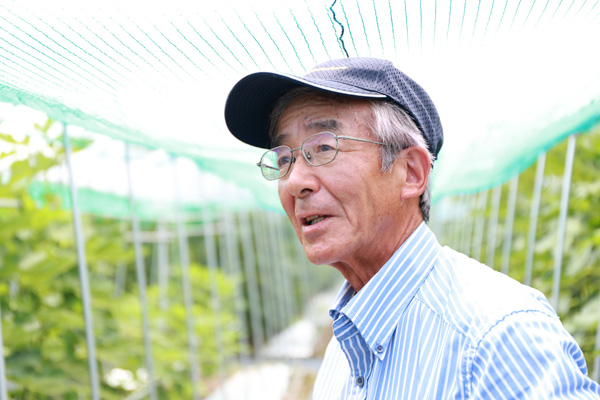
Major fig production started in Kawajima around 2006. Initially it was a pilot shipment of about 300 kilograms. Soon more farmers started to grow figs and by 2014 the production reached approximately 53 tons, the highest production and shipment amounts in Saitama.
“Figs bruise easily so most of them are sold in Saitama. It is the residents’ privilege to be able to enjoy ripe figs,” said Satoru Kimura, stopping for a moment while he was harvesting figs.
After retiring, he became a fig farmer. Right now, he is the head of Kawajima Town Fig Producers’ Union, with 26 fig farmers.
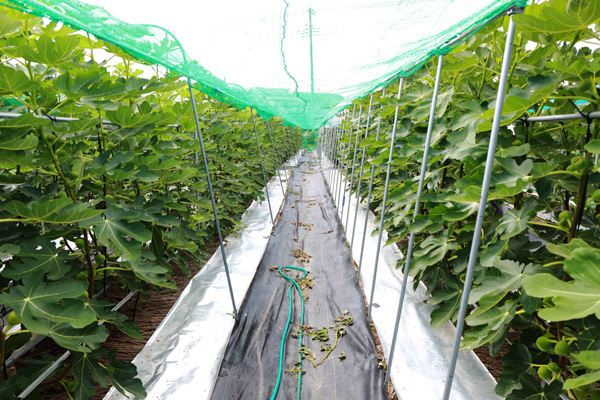
Most of the union’s figs are grown using the flat-rod style, where two branches are grown in parallel to the ground. This way the plants get enough air and sun. The union recommends growing with organic fertilizers, and sets strict standards to control quality, including the amount of pesticides permitted, as well as the size, color and sweetness level of the figs.
“The best time to enjoy it is when the entire fig gets red and darker in color, and the skin gets taut. The union’s figs have a sweetness level of over 13, meaning they are very sweet. Try fresh figs once.”
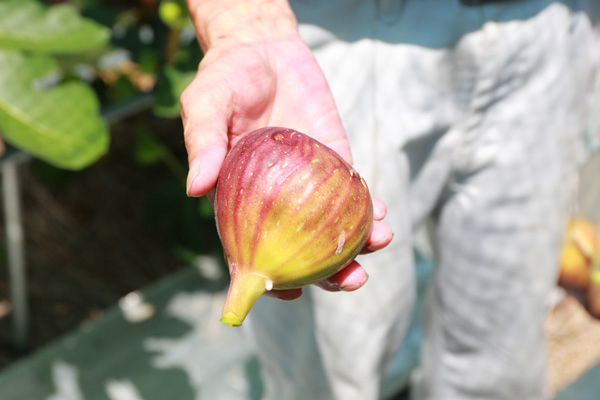
Kawajima’s figs are shipped from mid-August to mid-November. The union started offering frozen figs on a trial basis this year, which are proving popular for making jam and other processed products. “We hope to offer them steadily throughout the year. We will also have to develop successors. We are recruiting fig producers so if you are interested, contact the city office,” says Kimura, with hopes for the town’s future fig production.
Large blueberries with an enjoyable mouthfeel and sweetness
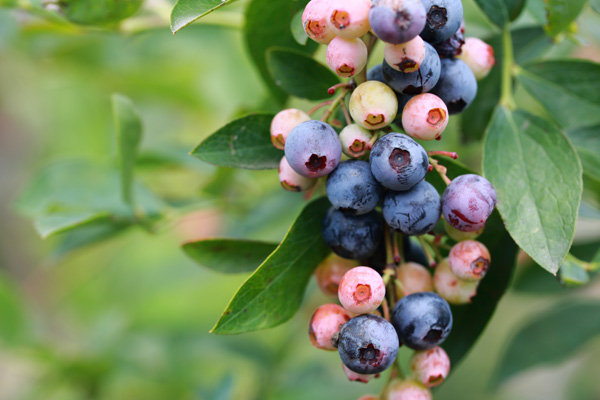
TOA Farm’s large blueberries are literally enormous. Blueberries are usually called medium-sized if they are about 15 mm in diameter. Yet these large blueberries are often 18 mm or larger.
Apparently, large blueberries are only possible when the choice of variety is a perfect match with the growing method. TOA Farm picks Eureka, Chandler, Titan and other large varieties out of over 300 kinds, creates ridges with soil mixed with wood chips and makes sure the soil expels and retains water at the perfect ratio.
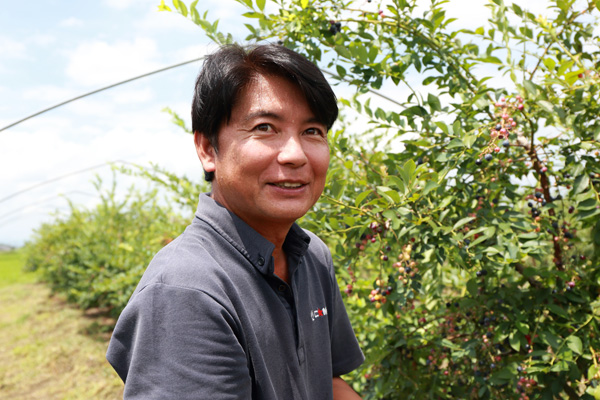
“I made many visits to a gardening store to select the suitable varieties. Blueberries will bear fruit for 10, 20 years once you plant them. You cannot redo the process, so you have to be very careful about which varieties to select.”
Hiroyuki Manaka who represents the farm is a new farmer with four years of experience. He started with 180 young blueberry trees, which has now expanded to over 1,000 trees of 35 varieties.
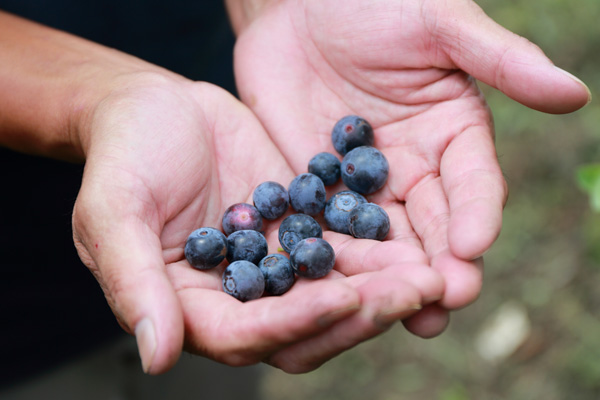
The blueberries are at their largest around June, just after the harvest period. The large blueberries are very juicy and perfectly sweet and sour. Apparently, some visitors become repeated customers after they experience picking blueberries.
TOA Farm operates TOA Bakery close to the blueberry field. At lunchtime, approximately 40 types of baked items adorn the store, including savory bread, sweet bread and hard bread, to meet any customer’s tastes.
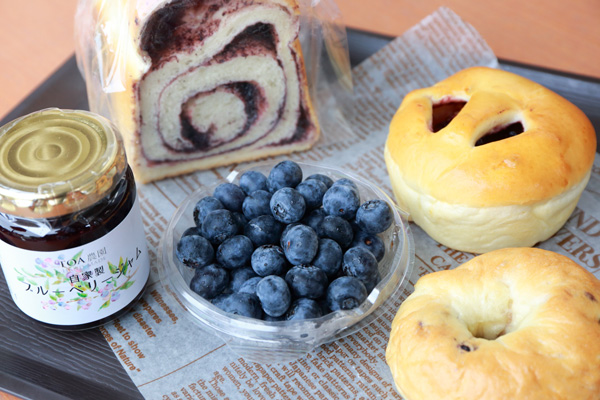
The most popular item is blueberry bread, with the farm’s blueberry jam mixed into the dough.
“We use the jam of an especially sour blueberry variety,” says Manaka. The dough is soft, smooth and starchy with rice flour. The blueberry flavor is also distinct.
The potential of Tenku Tomatoes that bucks tradition
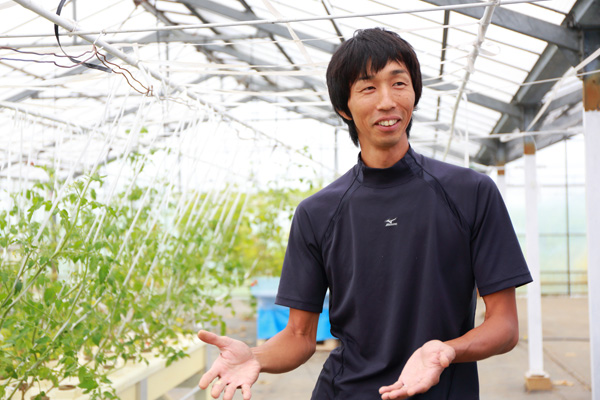
“I wanted to be a provider of jobs for people with disabilities,” says Takeshi Serizawa, looking back on his decision to become a farmer.
Serizawa has been a farmer for two years. Previously he was a teacher at a special needs school in Saitama. While he taught students with disabilities, his mind turned to employing people with disabilities and eventually he wanted to become a farmer himself.
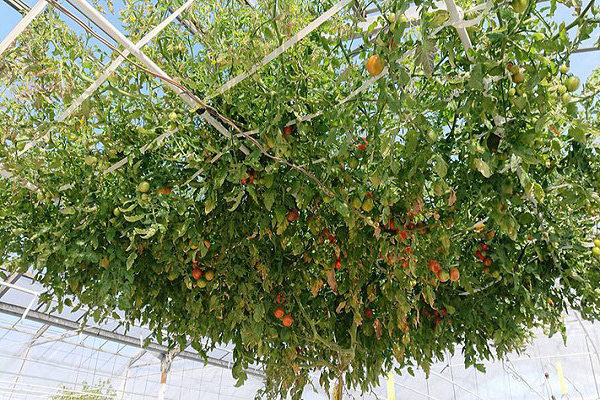
With TOA Farm’s Manaka helping him make a connection with the local residents, Serizawa managed to rent a greenhouse that was formerly being used for strawberry farming. Even though tomatoes are usually grown in soil, Serizawa is growing his tomatoes hydroponically as it is free of pesticides.
The popular way of growing tomatoes in soil is to use struts that are composed like arches or grids. But Serizawa constructed a support in the shape of a watchtower so that the tomatoes can hang from the ceiling. He calls this Tenku Tomato (meaning “sky tomato” in Japanese).
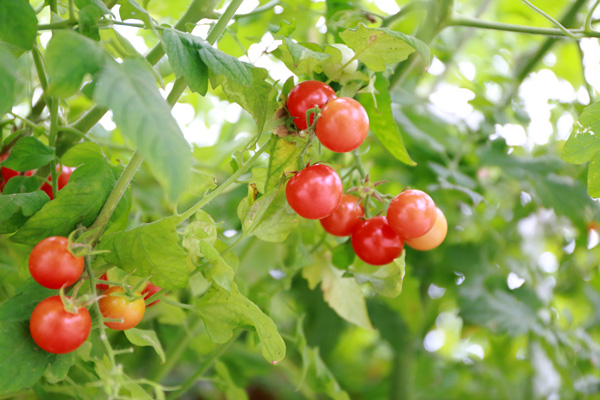
“With the traditional method, the tree bears fruit from the ground up to your eye level. When you tend to the fruit you have to bend up and down, which puts a tremendous strain on your knees and back. Tenku tomatoes are easy to take care of, even if you cannot move your body as freely as you wish.”
Encouraged by Serizawa, we picked a baby tomato from the ceiling and popped it into our mouth. When we bit into it the skin burst, releasing an amazing sweetness and refreshing sourness that went straight to our nostrils. There was none of the unpleasant green odor characteristic of most tomatoes. Surprisingly, the flavor gets even stronger in February or March, after the tomatoes have survived the winter.
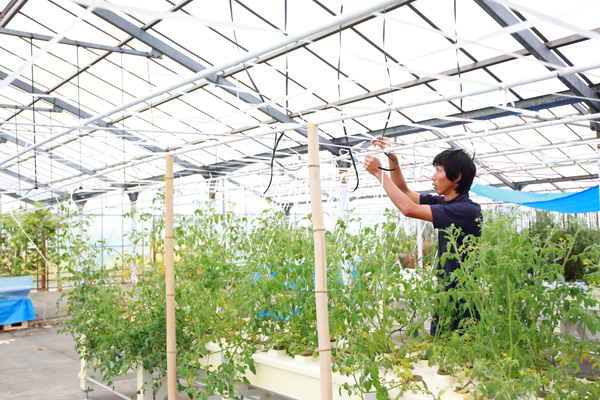
“We have seen few hydroponic tomatoes. I am still trying to figure out what is best to do, whether to have just one main tree, or to plant several trees together, and which variety. I am trying many different conditions. Eventually I would like to make some processed items like dried tomatoes,” says Serizawa. Looking ahead to his grand theme of employing people with disabilities, he is contemplating his next step.
Packed with the charm of local products: Smile Stick
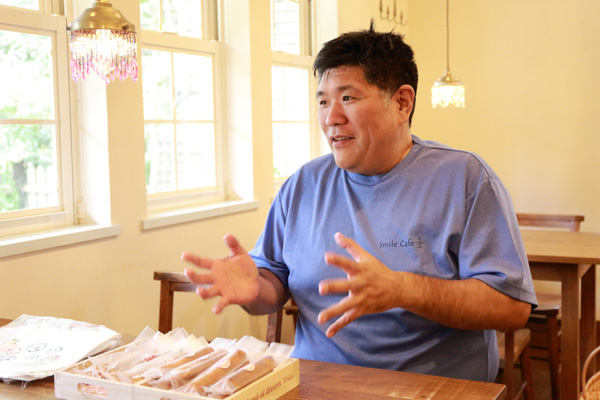
Smile Café 1/2 is a café that commercializes Kawajima’s local products. Run by social welfare corporation Wing, this café serves as a place of employment for people with disabilities. The “1/2” means “sharing smiles”.
Smile Cafe 1/2 developed this product, triggered by the town’s project of combining agriculture with different businesses. To ask how that happened, we interviewed Nobuhito Yamazaki, who represents the café.
“The local government contacted us and said they wanted us to develop new products, using figs, strawberries and rice grown in Kawajima. We had been making rice flour donuts, so we decided to go for it.”
After six months of trial and error, Yamazaki finally created baked rice flour donuts, Smile Stick. First, he was thinking of a donut ring, but ended up with a stick shape because some people said they wanted to enjoy the donut while strolling in the adjacent park (Heisei No Mori Park).
The donut comes in fig and strawberry varieties. Made with Koshihikari rice flour and wheat, the dough is moist, with brandy-macerated dried figs and strawberries oozing a flavor suitable for grown-ups. Though the donuts are only sold at the store because they do not last long, they have proven to be extremely popular.
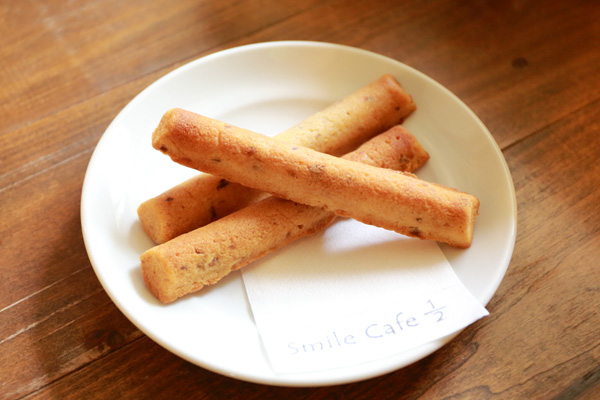
After developing Smile Stick, Yamagishi began to think of Kawajima strongly as an agricultural place. He is full of ideas for Smile Stick No.2, following the strawberry and fig varieties.
“Tenku Tomatoes and large blueberries of Kawajima are suitable for processed products. We have such great local products, but the producers and processors are working separately. That means many missed opportunities. It looks as if producers in town are making more connections with each other, and they are also motivated. Personally, I am dreaming about creating a fig curry.”
In 2018, a total of 21 great products from Kawajima, including Kawagoe Clan Cellar Rice, figs, large blueberries, Tenku Tomatoes and Smile Stick were approved as KJ-brand items. With such great potential, how are the KJ brand items going to develop? We cannot keep our eyes off their future developments.
At "Koishikawa Terrace" in Bunkyo-ku, Tokyo, we will hold a fair using special products of Kawajima Town, Saitama Prefecture in 2019 as well as last year. In addition to the popular "Kawashima Ichijiku Gozen" last year, we plan to offer "Sutate", a local dish, and a new menu. Why don't you try the "seasonal" Kawajima town's delicacies?
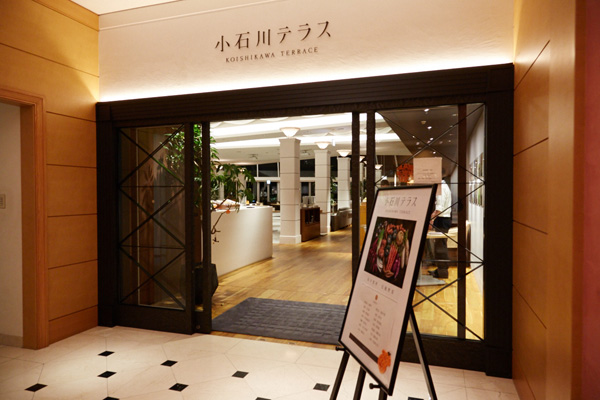
Koishikawa Terrace
Koishikawa Terrace, located in Bunkyo-ku, Tokyo, is a restaurant that offers a cooking menu that focuses not only on the ingredients but also on the cooking method, making use of the know-how that has been used to handle traditional vegetables nationwide.
【Event dates】
September 24th (Tuesday) -October 18th (Friday), 2019
| address | 1-3-3 Suido, Bunkyo-ku, Tokyo *8 minutes’ walk from Edogawabashi station, Tokyo Metro Yurakucho Line |
|---|---|
| TEL | 03-5840-2846 |
| business hours | Lunch 11:30-14:00 Cafe 14: 30-17: 30 Dinner 18: 00-22: 00 |
| Closed | Saturday, national holiday |
| URL | http://koishikawa-terrace.jp/ |

